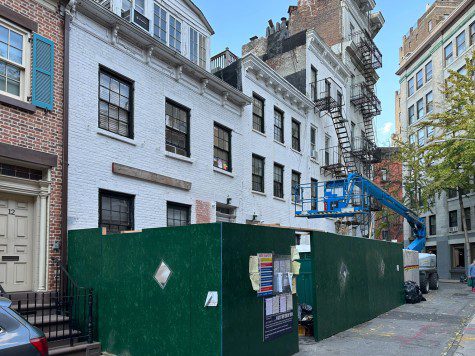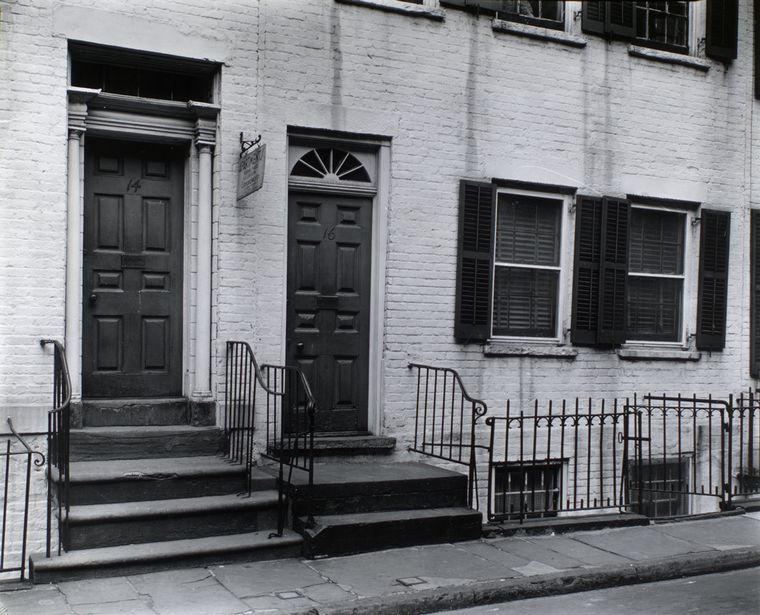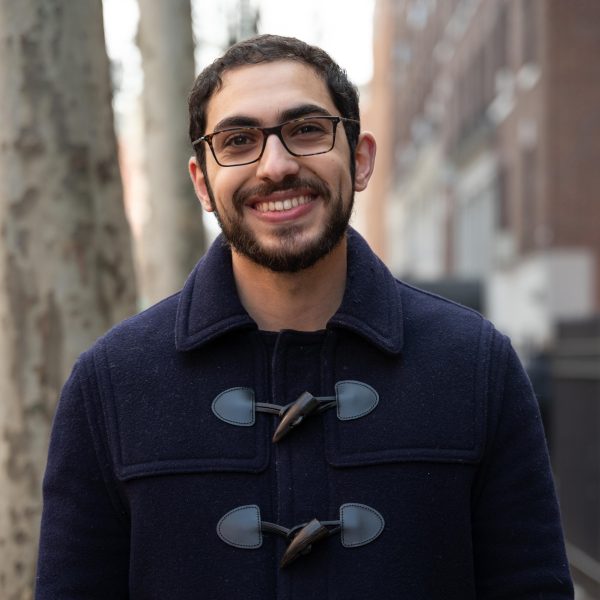Demolition of historic Gay Street building prompts public outcry
Greenwich Village residents gathered at a 200-year-old building slated for demolition after unapproved work left it unstable.
A photo of the adjoining buildings at 14 Gay St. and 16 Gay St. taken by celebrated photographer Bernice Abbott in 1937. (Photo by Bernice Abbott, Courtesy of the New York Public Library)
November 18, 2022
Hundreds gathered in front of a 200-year-old building in Greenwich Village on Monday, Nov. 14, to protest the demolition of a two-story building. Village Preservation, a group advocating for the protection of Greenwich Village, NoHo and the East Village, mobilized neighbors and advocates after it heard that the New York City Department of Buildings ordered its immediate demolition.
Lionel Nazarian, the owner of the building, located at 14 Gay St., as well as five other nearby buildings, has come under fire for allowing unauthorized renovations in the building’s basement. The DOB ordered 14 Gay St. to be demolished after it found that a contractor’s unapproved work damaged the building’s foundation. Neighbors are also concerned about the nearby building at 16 Gay St., which may be affected by the neighboring property’s structural damages.
14 Gay St. was built around 1827, before becoming a landmark in 1969 when the city’s Landmarks Preservation Commission made it a part of the Greenwich Village Historic District. Writer Ruth McKenney wrote about her time living there in a series of New Yorker stories “My Sister Eileen,” which was later turned into a book, play, film and television series. It also inspired a musical. Photographer Bernice Abbott commemorated the building through her work.
Andrew Berman, the executive director of the nonprofit advocacy group Village Preservation, said that the city failed to protect residents, or the history of New York City and its landmarks, by allowing the building to be demolished. Village Preservation has described Nazarian as “a landlord with a track record of creating allegedly hazardous conditions and what tenants called ‘a living hell’ of harassment, denial of services, and dangerous work.”
“This house survived 200 years through the draft riots, nearby dynamiting for the construction of the subway and PATH trains, the demolition of the Sixth Avenue El, a deadly fire in the basement, and hurricanes and superstorms,” Berman said. “But it couldn’t survive six months of ownership by Mr. Nazarian and the flimsy oversight of the NYC Department of Buildings and the NYC Landmarks Preservation Commission.”

Berman was joined by State Senator Brad Hoylman, Assemblymember Deborah Glick, City Councilmember Erik Bottcher and Community Board 2 in condemning the building’s destruction.
Nazarian said that problems with the building were evident from the moment he walked in, and that he had begun restoration work around two or three months after he took over. He blamed the building’s structural issues on previous owners, who he accused of not properly repairing the property, along with the 2003 fire in the basement.
“Everything was done with the intent of fixing the building,” Nazarian said. “I’m devastated that the buildings have to come down. I did my best to try and repair them in the first place, and once I got the news, I had to take it down. I fought hard for about a week to try and save it, but the fact is that the buildings were in terrible shape, to begin with.”
Nazarian did not respond to questions about the DOB’s findings that unapproved work had allegedly been carried out by one of his contractors.
He said he is now focused on saving 16 Gay St., which he hopes will be possible as a result of demolishing its neighbor.
In a separate statement, the Landmarks Preservation Commission also said that the contractors did not follow plans for repairs at 14 Gay St. The building was deemed a threat to public safety by the city after large sections of the foundation wall were removed by contractors, leaving them without support.
“It’s been a slow-motion crisis for decades,” said Jeanne Kelly, a neighbor. “Bad players got involved, and now we are at this juncture. It’s the fault absolutely of the DOB for not doing its job and the Landmarks Preservation Commission for not doing their job. There was no oversight here. That’s what happens.”
The Landmarks Preservation Commission is working with DOB and Nazarian to salvage bricks and other parts of the building for a potential reconstruction of 14 Gay St. Scotty Elyanow, who also lives near the building, is concerned about noise from the construction project over the next few years and issues with rats and other vermin, which are already prevalent due to the building’s deterioration.
“Demolitions would make quality of life a living hell here for years when they try to demolish this and then reconstruct everything,” Elyanow said. “Ultimately in this city, developers always have the upper hand and that’s the part that frustrates people that live here, because whatever developers end up wanting to do, they pretty much get to do.”
Contact Adrianna Nehme at [email protected].


























































































































































